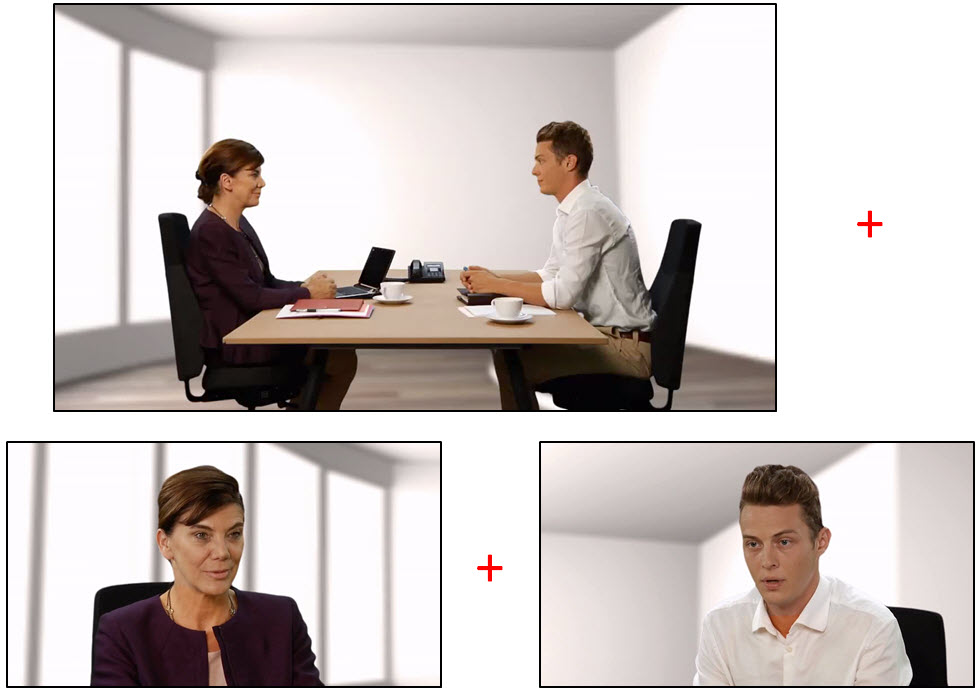4 Cost-Saving Tips for Corporate & e-Learning Video Localization

Storyline 360 Adds Font Substitution for E-Learning Localization
April 4, 2018
4 Tips for Effective Film & TV Dubbing Talent Casting Reviews
April 18, 2018Corporate and e-Learning content is particularly tricky when it comes to video localization. The information itself is difficult to get right, especially if it has legal or administrative terms. At the same time, localization accuracy is often critical to the safety of customers and employees. So what can video producers do to make their content localization more accurate – and more cost-effective?
This post lists 4 tips that corporate and e-Learning video producers must keep in mind as they develop their source videos.
[Average read time: 4 minutes]
Why is corporate & e-Learning video localization difficult?
To start, because localization accuracy really is critical to corporate and e-Learning content. Think of a safety training video at a packing plant, one that shows employees how to use the heavy machinery and avoid harm. The instructions conveyed in the voice-over track directly impact employee well-being – and an inaccurate translation could actually lead to injuries.
Moreover, the video format itself is challenging to localize. Script translations have to be edited to fit within the time allotted by the source video, and so that they synchronize to the visual elements in the frame. This is particularly difficult since most languages expand during translation – for example, Spanish and French voiceover translations are often 30-50% longer than the source English. As you can imagine, editing scripts for timing while maintaining translation accuracy is no small feat.
Many corporate and e-Learning videos also feature on-screen speakers, like presenters or scenario characters. These speakers add a layer of difficulty to video dubbing, especially for projects that require lip-sync. That extra labor, in turn, adds to the cost of a production.
Finally, videos have many other elements that need to be localized, like animations, graphics with text embedded, forced narratives, on-screen titles and supers – and just about anything else that a video editor can dream up. Full localization is usually more than just voice-over – and in fact, sometimes these post-production elements are the driving cost of a project.
So what can video editors do to minimize project costs, and increase the quality of their localized videos? Let’s jump right in.
1. Limit on-screen presenters.
As just mentioned, on-screen presenters add to the labor and cost of most video localization projects, even when producers pick a more cost-effective dubbing option like dialogue replacement. Fortunately, there’s a very simple solution to this problem – switching out the on-screen presenters altogether.
The best way to do this is to replace the presenter with a combination of off-screen narration and B-roll that illustrates the particular video lesson or process being discussed. Keep in mind that this will require sourcing more B-roll than may already be in the footage bins, adding to the shooting and editing costs. But the cost-savings from this one change can be dramatic, especially over multiple languages.
2. Build in coverage and reactions.
Sometimes you need to have on-screen speakers, like in a scenario video for an e-Learning course. Moreover, because most scenario videos are narrative, they require lip-sync, which is the most labor-intensive dubbing option. However, there’s one way to make these videos more localization-friendly – to get “coverage,” or multiple shots for a scene.

For example, if you’re shooting a scene in which two characters speak with each other, don’t just get it all in a two-shot and use only that for the final edit. Why? Because on-screen speakers whose lips stay visible at all times are much more difficult to dub. If you shoot the scene from multiple angles and cut them together, you effectively build short sections when your speaker isn’t on-screen, creating a kind of lip-sync buffer that allows for more accurate translations. Even better, the use of reaction shots and dramatic cuts will enhance your overall production value.
3. Avoid titles or text – or at least simplify them.
Text in video editing timelines has to be replaced and re-flowed manually during localization, adding a significant amount of labor and cost. Same goes for graphics with rasterized text that are imported in an editing timeline. And that amazing typewriter effect in your video? Yes, it’s only one hour of work on your end – but in a project with 28 languages, that’s the better part of a week in work hours. Stay away from complex text effects, and minimize on-screen text whenever possible.
4. Separate your music & effects track and save any source editing files.
This is standard practice for entertainment content, but often not done for corporate and e-Learning videos since they don’t have the same distribution or post-production requirements. However, it’s critical to have these elements for dubbing and video localization. Re-creating audio tracks or video elements can sometimes double the amount of localization work required, so make sure you include assets gathering at the end of your source production.
Consider doing a localization pass on the source video before translating
Of course, you may be working with legacy videos that have all kinds of intricate text elements and multiple on-screen speakers, and for which you might not have source files. In these cases, it’s good to consider doing an asset prep pass to create a more localization-friendly source package. This kind of setup is in fact pretty common in multimedia localization projects, since there’s a lot of legacy content out there. Yes, it means re-working the videos extensively, as well as getting new reviews from the different stakeholders in your organization. And of course, this up-front work may delay the start of your linguistic translation a little. But it’s the best way to lower video localization project costs, and to ensure that you get the highest quality possible in your localized videos.

